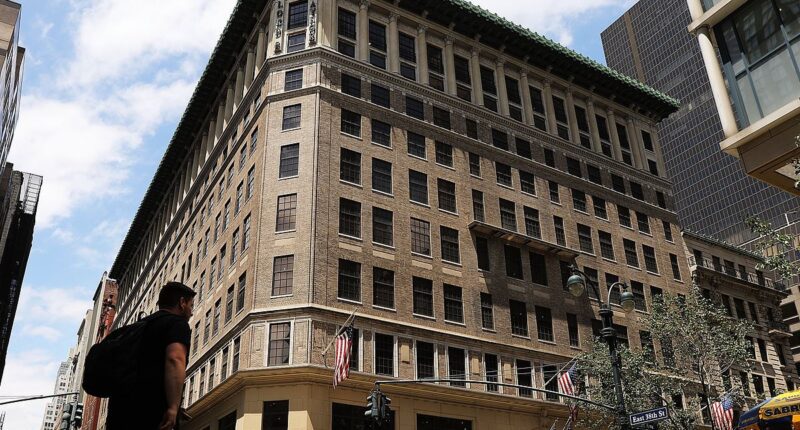Lord & Taylor is looking to reclaim its position in retail with a sweeping new strategy that will see it blend nostalgia with modernity.
The iconic department store is launching a rebrand to bring back what was old as new, with plans including to reinstate its iconic cursive logo.
The storied retailer is determined to prove that its timeless style and the enduring legacy for which it became famous, never go out of fashion.
‘The removal of the iconic logo in 2022 marked the brand’s most significant act of disloyalty,’ remarked Sina Yenel, Chief Strategy Officer at Regal Brands Global, during a conversation with Retail Dive.
‘This is a brand that’s been out here for 198 years. Lord & Taylor has such a huge profile among different generations and cultures.’
The revival comes under the stewardship of Regal Brands, which acquired Lord & Taylor’s intellectual property earlier this year.
Its previous owner, the Saadia Group, defaulted on $45 million in debt, leading to the brand’s assets being relinquished.

People walk by the former Lord & Taylor’s flagship store on 5th Avenue in Manhattan in 2018

Lord & Taylor began as a Manhattan dry goods store in 1824
Under new leadership, Regal Brands has curated a 75-member team with the ambitious goal of revamping Lord & Taylor to resonate with today’s consumer.
The reboot is not just a return to old glories but a deliberate reinvention that steers clear of fleeting trends.
‘Lord & Taylor should be about fashion that is going to last,’ Yenel stressed.
The resurgence of the retailer revolves around providing sophisticated, classic fashion – steering clear of both high-end luxury and rapid fashion trends – and establishing itself as a provider of enduring quality and style.
Lord & Taylor’s initial relaunch will prioritize e-commerce, reflecting the shifting consumer landscape.
The soft launch will spotlight home goods, dresses, and footwear – categories aligned with the brand’s reputation for sophistication.
To enhance the online experience, the company is also rolling out customer service based in the U.S. rather than some far flung call center overseas.
But the ambitions don’t end online. Regal Brands hopes to return the brand to physical retail spaces in the future, possibly through pop-ups and shop-in-shops.

As part of rebrand, what’s old is new once again as Lord & Taylor plans to reinstate its iconic cursive logo

People walk by the Lord & Taylor store on Fifth Avenue in 1935
![]()
The closure of its iconic company-owned 11-story Fifth Avenue flagship building in 2019 marked the beginning of the end
This strategy aims to revive the ‘fun and entertainment’ that traditional retail once offered.
Founded in 1826, Lord & Taylor was a trailblazer in American fashion retail, nurturing design talent and creating cherished memories for generations of shoppers.
It was founded by two English immigrants on the Lower East Side in New York City.
During the U.S. Civil War in the 1860s, it opened a special section offering mourning apparel for widows.
Lord & Taylor opened its flagship store on Manhattan’s Fifth Avenue in 1914, and became known for upscale fashion and its holiday window displays.

Pedestrians walk past a shuttered Lord and Taylor department store following their filing for bankruptcy amid the COVID-19 pandemic in May 2020

By 2020 all locations were liquidated amid the COVID-19 pandemic
However, shifting consumer habits, economic pressures, and ownership missteps led to a steep decline.
The closure of its iconic company-owned 11-story Fifth Avenue flagship building in 2019 marked the beginning of the end, and by 2020 all locations were liquidated amid the COVID-19 pandemic.
Despite such setbacks, Lord & Taylor’s legacy endures, and its revival is fueled by a deep connection with its heritage.
Yenel is optimistic about the brand’s new chapter: ‘There are good things about being small. We can make decisions in an instant, and that gives us a lot of flexibility.’

















